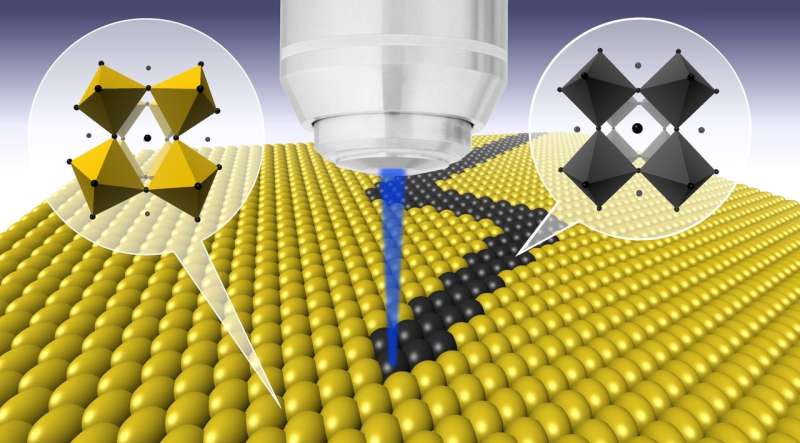Writing the building blocks of solar technology with lasers

Most of today's technology in solar energy, telecommunications and microchips is constructed using silicon-based materials. However, in recent years, a new family of semiconducting materials, perovskites, has burst onto the scene, offering promise for new and better technologies. The properties of these materials rival many of the well-established commercial options, while remaining far cheaper and easier to make.
Perovskite is the general name for a material consisting of three chemical components A, B and X, arranged in a specific molecular crystal structure ABX3. One of these perovskites currently being investigated by researchers is formamidinium lead iodide [HC(NH2)2PbI3 or FAPbI3], which holds the world record performance for a perovskite-based solar cell, rivaling silicone-based ones.
Important challenges, however, remain to be resolved regarding the stability of perovskite crystals under real-world conditions. At room temperature, for example, FAPbI3 arranges itself in the yellow coloured delta phase, with little practical value for technological applications. But when heated above 150° C, the material rearranges itself into a different black structure, called the alpha state, before reverting to the delta phase after a few days under ambient conditions. It is this dark alpha state of FAPbI3 that is most interesting for researchers and technology. Until recently, researchers have tried to access the high-temperature alpha state by heating the material and stabilising it at room temperature using surface and chemical treatments.
KU Leuven researchers from the Roeffaers Lab and the Hofkens Group have now discovered a new, easier way to create the sought-after dark alpha-phase perovskite. They used direct laser writing (tuned intense laser light) to locally heat the perovskite surface, making it change from the useless delta state to the highly desirable alpha state. Furthermore, they also found that the material now remained in this state for many weeks, even at room temperature, without further need of a stabilising treatment. The KU Leuven scientists further managed to use the laser beam to rapidly micro-fabricate complex patterns of the dark FAPbI3 state.
The researchers recently published their discovery in the high-impact nanotechnology journal ACS Nano (Steele et al. 2017).
"These findings are a big step forward in locally tailoring the structural, electrical, and optical properties of an important new class of materials and provides an avenue for making customised optical devices, all on demand."
More information: Direct Laser Writing of δ- to α-Phase Transformation in Formamidinium Lead Iodide"; Julian A. Steele, Haifeng Yuan, Collin Y. X. Tan, Masoumeh Keshavarz, Christian Steuwe, Maarten B. J. Roeffaers, and Johan Hofkens, ACS Nano, 2017, 11 (8), pp 8072–8083, pubs.acs.org/doi/abs/10.1021/acsnano.7b02777
Journal information: ACS Nano
Provided by KU Leuven




















